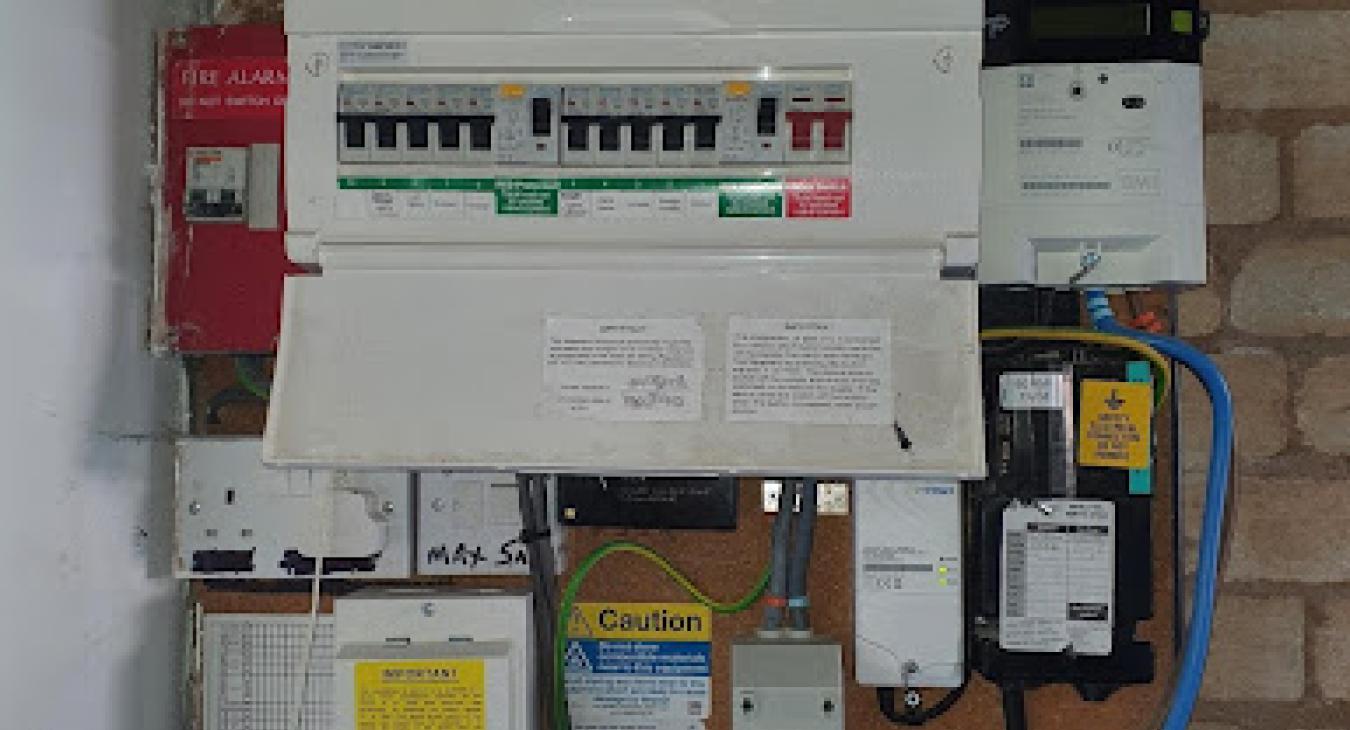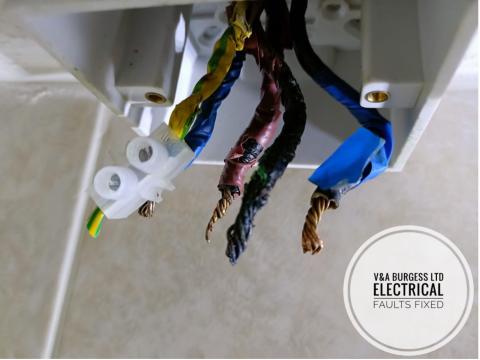
A HOUSE ELECTRICAL FAULT can be a worry for homeowners along with causing great irritation.
When a circuit breaker or a trip switch will not turn back on it can cause distress and concern. In some cases, it is possible to restore power yourself, if for instance, the power disruption was caused by an anomaly and the cause has gone away. Switches will reset if they sense there are no electrical faults in the electrical system and in some cases simply resetting a switch will work. In other cases where the electrical fault remains then this will often require an electrician to visit your home to find out the cause of the electrical fault and put it right for you.
What types of electrical fault are there?🤔
Short circuit – A short circuit on an electrical circuit is a situation where the Line and Neutral have become connected without a load between them. A load is an electrical item such as a lamp or an appliance. When Line and Neutral are bridged in this manner, the electricity has an incredibly low resistance path in the circuit and this causes a very high electrical current to flow. This high electrical current cannot be allowed to continue as to do so would mean inevitable cable damage. It is for this reason that the circuit breaker will trip, normally with a POP or a BANG.
Fault to Earth – This type of fault is a situation where there is a connection to earth in the electrical installation that allows a path from Neutral or Line directly to Earth. Generally speaking, there should be no way for electrical current to leak to earth from Line or Neutral. When this happens the Earth Leakage Device (RCD, RCCB, RCB, RCBO) in your consumer unit may trip, or if the fault is severe enough a circuit breaker may trip. This type of fault can cause nuisance tripping and can appear that there is nothing wrong as you are sometimes able to reset a trip switch several times before the issue is found.
Insulation Fault – This kind of issue usually affects the cabling. When insulation breaks down on the copper cabling, we can see insulation faults occur. This will normally trip the RCD / RCB / RCCB or RCBO device in the consumer unit. It may be difficult to ascertain where the issue is in the electrical system but an electrician should be able to narrow it down.
Damaged electrical equipment – When electrical equipment or accessories become damaged, they can cause problems. Arcing or sparking sockets and lights can cause switches to trip in the consumer unit. These electrical accessories can become damaged through wear and tear, abuse, or accidental damage. When this happens the consumer unit may detect the issue or, in some cases, it may not. If you suspect that you have damaged electrical equipment then it's best to consult an electrician to come and change the equipment for you.
Loose or damaged wiring – When cabling becomes damaged or connections become loose it can increase the risk of electric shock or electrical fires in the home. Loose connections cause overheating, high resistances on circuits and fires. Commonly this can occur in the consumer unit itself and when it does the consequences can be problematic. Loose connections in a consumer unit lead to melting and fires and this means a replacement consumer unit is often necessary.
Faulty appliances – These are often the cause of apparent electrical faults in the electrical system. One of the best DIY fault finding methods (perhaps the only safe one) if to disconnect the appliances from the electrical system. This involves physically pulling the plugs out of the wall, yes that’s right, it’s not enough to simply turn the sockets off. Appliances should be disconnected completely from the electrical system and then the consumer unit should be checked to see if switches can safely be turned back on once again.
Electrical faults in the street – Whilst rare, electrical faults in the street can cause issues in our homes appearing as a HOUSE ELECTRICAL FAULT. I recall a recent job where the customer had no power at all in their home and yet nothing had tripped at the consumer unit. All the exposed metal work in their home had become live at 230 volts. All the metal appliance cases and pipework were live! ☹ Even after turning all the electrical supply off to their home, the appliances and metalwork was still live! I made the call to the local Distribution Network Operator to inform them they had a dangerous situation and they responded immediately. I also noticed the neighbours had no power so informed them of the danger too.
Sockets and switches stop working – These types of electrical issue are often caused by loose connections mentioned above. When wiring becomes loose, there is a high resistance and electrical current simply cannot pass in sufficient quantity to power anything correctly. This can appear like the socket or switch has no power, when in fact there is a live supply but not tight enough connections for anything to work. This can be dangerous as an unsuspecting person may assume that there is no electricity supply to the area and try to rectify it ☹. Occasionally when switches and sockets stop working it is because of internal failure. Sockets and switches have moving metal parts inside which can wear over time and become loose or make poor contact. Connections and the rear may still be tight but the electrical accessory themselves may be in a state of failure.
Consumer unit failure – Parts inside the consumer unit can sometimes fail internally and then power is disrupted. It may not be immediately apparent that this has occurred but your electrician will be able to verify if the components have failed.
Can I carry out any fault finding myself?🫵
Whilst we appreciate that you may want to investigate electrical issues yourself, it is simply not safe to do so. Only an electrician has the knowledge, experience, and test equipment to work safely on electrical installations. DIY electrical work and fault finding can be dangerous and are likely to lead to injury.
You should entrust the services of a fault-finding specialist to check your electrical installation for you and repair any defects. Check out Google reviews to find a suitably qualified and experienced contractor to carry out this work for you.
📞 01925 595 980 (Warrington)
📞 0151 351 4011 (Liverpool)
📧 Enquire online
💻 Visit our website










